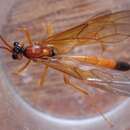en
names in breadcrumbs


The latest treatments (such as Yu et al. 2005) list a number of synonyms as well as subspecies, somewhat complicating the ability to differentiate the taxa.
Nephopheltes Cushman, 1924: 16. Type species: Nephopheltes japonicus Cushman, 1924. Original designation. Synonymized by Townes (1945).
Opheltes adalah genus kumbang tanduk panjang yang tergolong famili Cerambycidae. Genus ini juga merupakan bagian dari ordo Coleoptera, kelas Insecta, filum Arthropoda, dan kingdom Animalia.
Larva kumbang dalam genus ini biasanya mengebor ke dalam kayu dan dapat menyebabkan kerusakan pada batang kayu hidup atau kayu yang telah ditebang.
Opheltes adalah genus kumbang tanduk panjang yang tergolong famili Cerambycidae. Genus ini juga merupakan bagian dari ordo Coleoptera, kelas Insecta, filum Arthropoda, dan kingdom Animalia.
Larva kumbang dalam genus ini biasanya mengebor ke dalam kayu dan dapat menyebabkan kerusakan pada batang kayu hidup atau kayu yang telah ditebang.
Opheltes Holmgren, 1859 è un genere di imenotteri della famiglia degli Icneumonidi[1].
Il genere include le seguenti specie[2]:
Opheltes Holmgren, 1859 è un genere di imenotteri della famiglia degli Icneumonidi.
Opheltes is een geslacht van vliesvleugeligen uit de familie van de gewone sluipwespen (Ichneumonidae). De wetenschappelijke naam van het geslacht werd in 1859 gepubliceerd door Holmgren, en is later nogmaals ongeldig gebruikt als Opheltes Thomson, 1864, een niet langer geaccepteerde geslachtsnaam in de familie boktorren.
Opheltes is een geslacht van vliesvleugeligen uit de familie van de gewone sluipwespen (Ichneumonidae). De wetenschappelijke naam van het geslacht werd in 1859 gepubliceerd door Holmgren, en is later nogmaals ongeldig gebruikt als Opheltes Thomson, 1864, een niet langer geaccepteerde geslachtsnaam in de familie boktorren.